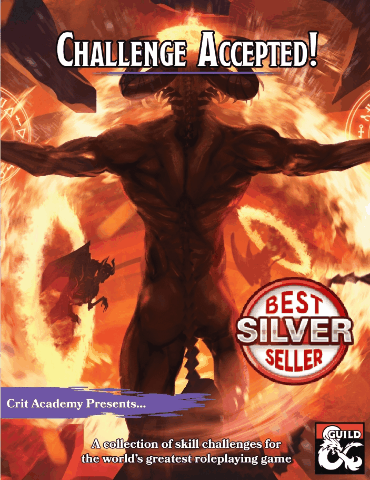Class Analysis: Druid and Ranger
- Justin Handlin

- Jan 4, 2020
- 6 min read

Crit Academy breaks down the Druid and Ranger features in the Dungeon and Dragons Player Handbook. We touch on the mechanics and how they function, as well how we would reflavor them to give them a fresh and unique feel.
The Druid is one of the most versatile classes in Dungeons and Dragons, its unique ability to shape change allows them to access a variety of abilities that they wouldn't otherwise have without magical items, feats or spells. Don't have a rogue in the party to stealth and scout ahead? Have the Druid turn into a spider, bird, cat or any other mundane critter that's easy to overlook.
The Ranger gets a lot of flak from optimizers as their damage doesn't quite rate as high as some of the other classes. This is most notable in the Beastmaster. Due to this the beastmaster has a very negative stigma, but the utility it can bring can be absolutely amazing. For example, pick a small race, and you can ride atop your companion as a mount! Pick up the giant snake and become Silver Snake Surfer! Surfs up ya dirty son of an Orc!
Recommendation:
Unearthed Tips and Tricks: New and reusable D&D content for you to bring with you on your next adventure.
Character Concept:
The Converted Orc
This character concept doesn’t have to be an orc. Any type of normally-savage character (orc, ogre, violent tribal humans, etc.) would do. This character had some moment of awakening that caused them to change their ways. Maybe they were hit by a curse from an enemy spellcaster that addled their brain. Maybe they found an intelligent sword that holds the spirit of a paladin that urges them to be a better person. Maybe they simply befriended a child and the young one’s innocence and optimism has become infectious. Whatever
the case, this character is making an effort to help people rather than hurt them. Sometimes they help travelers who are waylaid on their journey. Sometimes they help defend a town from bandits or others of their own kind that seek to destroy. Maybe a flood is coming, and they help build barriers to keep the town safe.
Whatever the case, the people around them may feel apprehensive towards them at first, but eventually they will grow to love and support the character as they prove themselves.
The Converted Orc could be a PC, and their moment of awakening could be the jumping-off
point for a campaign. Or they could be an NPC, and the players might be the first people to see them as a potential ally. Whatever you do, this character is a great opportunity to break some stereotypes and show players that not all monsters are monsters.
Monster Variant
For our Monster Variants, we choose a normal statblock from the Monster Manual and alter its abilities and features to add some variation to your fights.
Kobold Slinger
Origin Stat block: Kobold
New Features:
Sling. Ranged Weapon Attack: +4 to hit, range 30/120 ft., one target. Hit: 4 (1d4 + 2)
bludgeoning damage.
Special Shots (1d4/Day). The kobold slinger uses one of the following options, using the Sling attack as a baseline:
Putrid Shot. Target must succeed a DC 12 Constitution saving throw or have disadvantage
on attack rolls. The targe can repeat the saving throw at the end of each of its turns, ending
the effect on itself on a success and becoming immune to the putrid shots effect for one hour. A creature with no sense of smell is immune to this effect.
Fire Shot. The attack does an additional 2 (1d4) fi re damage. Flammable objects that aren’t
being worn or carried are ignited.
Glue Shot. The target must succeed at DC 12 Strength saving throw or become restrained. A
target may use its action to attempt to break free on a successful DC 12 Strength(Athletics)
check.
Encounter Concept:
The Sludge Pit
Two opponents are pitted against each other on a narrow platform over a pit of sludge. Their
hands are tied behind their backs, and their goal is to knock their opponent off the platform into the pit below by any means necessary! Perhaps they are prisoners, forced to perform for a king and his court. Maybe they’re simply bar patrons that had too much to drink, and one challenge led to another and now they’re facing off over the sludge pit.
Whatever the case, the opponents will have to use their creativity, their might, and their agility to knock their opponent off without falling into the pit themselves! This can be simply resolved with a multitude of contested checks. Be sure to give advantage and disadvantage for clever descriptions that the players come up with. This is meant to be a fun and lighthearted laugh. Encourage them to get as ridiculous as they can (eg. head butt to the face, knee to the groin, or even bite an ear).
Magic Item:
Earrings of Telecommunication
Wondrous item, uncommon
These magical earrings always come in a pairs. Each pair, when worn by two separate
creatures, may communicate with each other over vast distances. The earrings have the same functionality as the Sending spell, except their communication lasts up to one minute. Each use of this communication costs one charge. A pair of Earrings of Telecommunication have 4 charges, and they regain 1d4 every day at dawn.
Give one to the party scout, and keep one back at camp. That way you can keep up with every update as it happens. If you have to leave your home base and travel far, just leave one with a trusted confidant who can use it to reach you while you’re away. Communication has never been easier!
DM Tip:
Guiding NPC's
Let’s be frank: Dungeons & Dragons is a complicated game, and it can be difficult
for new players to know what skills will be necessary for an adventuring party. Will the
players know to bring a source of healing? Do they know to keep watch at night? Do they
get frustrated when they hit a dead end after missing some of the more subtle clues in the
adventure? You could just tell them what they need to know, but maybe there’s a better way.
Enter the Guiding NPC! Give the players an NPC that offers to act as their guide (for a
share of the treasure, of course). This NPC is well-versed in the ways of adventuring. They
can offer tips to the players to keep them safe, to watch their back, and to make sure the
adventure runs smoothly. Don’t ever let this NPC outshine the players in combat. The NPC
should either hang back at all times, or provide a very small amount of support. Whenever a
puzzle or a roleplaying encounter takes place, they’re there to serve the players and to help the DM usher things along if absolutely necessary.
If it feels appropriate, feel free to kill off the NPC or have them leave the party. If the players
grow attached, a heroic death can leave a lasting impression. If the NPC simply leaves, they can be a recurring character that the players can consult for advice as they grow in experience.
Player Tip:
Don't Metagame
The player characters are out on their first adventure, and they’re learning about the
magical and dangerous world that they live in. While traveling through a swamp, they
encounter a hulking humanoid with vicious claws and rubbery skin. The fighter leaps
forward and slashes at the beast, impaling it right through the chest. However, victory turns
to dismay as the humanoids wound starts to close and it lurches forward to attack! The party
wizard begins casting Ray of Frost, when one of the players pipes up:
“Use Firebolt instead. This troll has regeneration, and fire is its weakness.”
What just went wrong here? Well, a player used information that their character wouldn’t have in order to gain an advantage. That’s called “metagaming,” and it’s generally frowned upon. In this scenario, nobody in the party had knowledge of trolls or how their regeneration functioned, so specifically calling this information out was metagaming.
Metagaming is a tricky issue because you can’t exactly erase knowledge that you, the
player, have, and you shouldn’t be penalized for being more experienced than someone else. Even so, there are ways to mitigate metagaming by working it out in-character. Instead of simply urging a fellow player to use a specific tactic, try to work with the DM to see if your
party might have that information. Offer to make skill checks (Nature, Arcana, etc.) to see
if your character has studied the monster in question, or - if your DM allows it - say that
your character used to go hunting in these parts and they were told by the locals to bring along a torch in case trolls showed up. If your character typically used fire anyway, then don’t worry about it. Just keep doing what you were doing.
Metagaming is going to bother some DMs more than others, so try to work with them to
help the game run smoothly.t never hurts to run an idea by the DM before doing it in-game. If you don’t know if your character would know or do something and you’re afraid of metagaming, just ask! Your DM will surely appreciate the question over you just
We hope you enjoyed your experience here on Crit Academy, if you did, please consider sharing our show and leaving a review here on itunes.
Support Us:
Subscribe to our Blog and be entered to win phat lootz every week.
Visit our website at www.critacademy.com or become a patron donor and get additional phat loot!















Comments